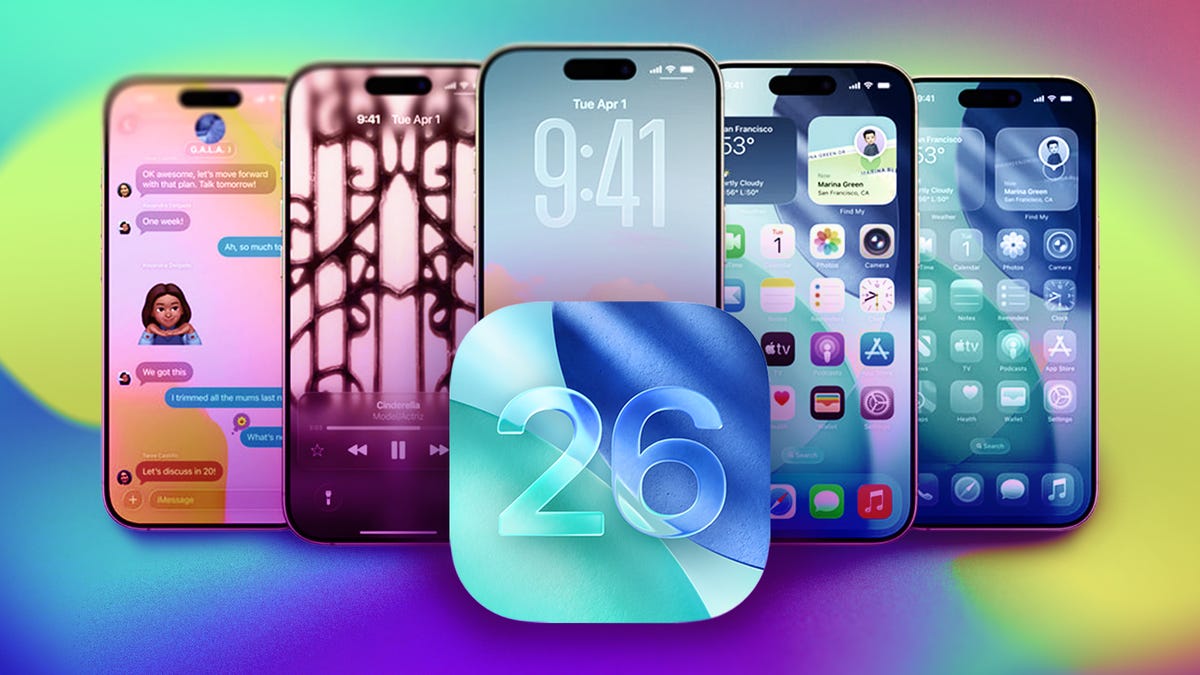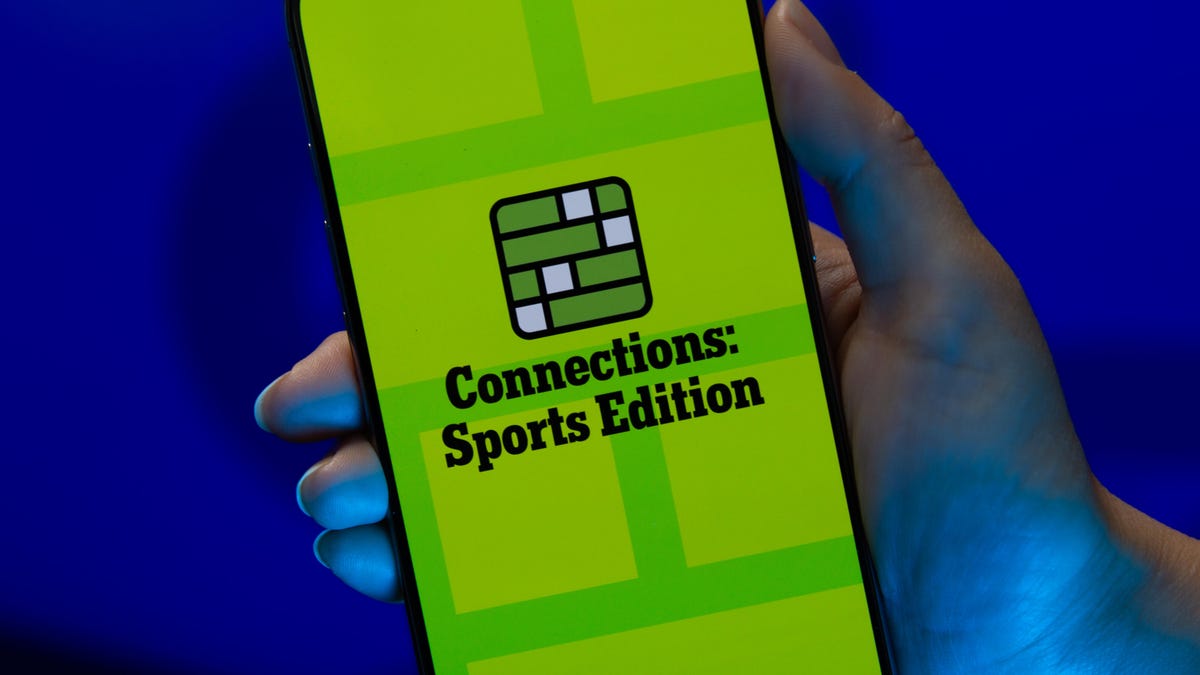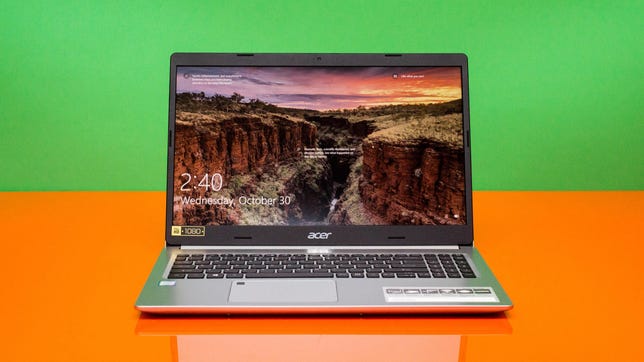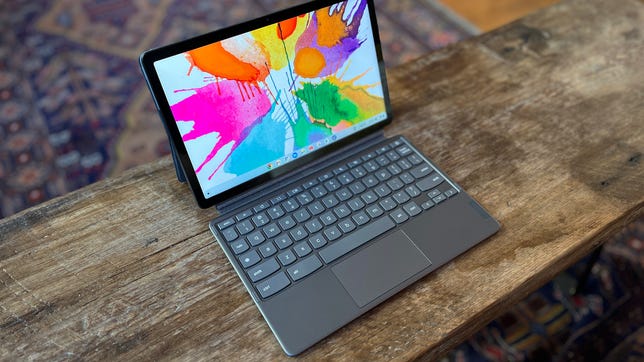Technologies
Best Budget Laptop 2023: Our Top 6 Picks Starting at $300
Find a great laptop for less. Here are the best budget laptops tested and reviewed by CNET editors.

When picking out the best laptop for your budget, you don’t want to spend big money on features you don’t need. The best budget laptop models can handle all your everyday tasks like checking emails, scrolling through social media, typing up documents and more, and they can be available for less than $500.
The chip shortages of the past couple of years have made finding a good budget-friendly laptop a little trickier. With fewer chips available, PC makers made more midrange and premium laptops than lower-end models to handle essential, day-to-day tasks. Inflation has driven up prices, too. So while it’s possible to find a good laptop under $500, you may need to shop around and wait for a discount. Otherwise, you may need to spend closer to $700 to get a laptop that’ll last several years. Also, you won’t find any current MacBooks at these prices: a new entry-level MacBook Air is $1,000. You’ll have to hit a good sale or pick up a refurbished one to get a MacBook for less.
The good news is, we’re here to help. If you’re searching for a laptop under $500, we’ve tested and reviewed the best budget laptops you can buy right now. Not sure what to look for in a good budget laptop? Jump to the buying advice right below our recommendations. This advice is based on our years of testing and review experience if you want to continue your budget laptop hunt on your own.
Use these picks to sort through the competition. Because there are a lot of cheap laptops that aren’t worth it, try not to make rash decisions when buying.
Best budget laptops
Josh Goldman/CNET
The HP Laptop 17 is a good pick if you want everyday performance and a bigger display. It’s perfect for home office tasks, entertainment and just general computing. Battery life is also good at nearly 9 hours in our tests. Although the configuration we reviewed is $650, HP offers many configuration options so that you can balance price and performance to match your needs. It’s also frequently on sale for much less. And if you’d rather have a smaller laptop, HP makes both 14- and 15.6-inch models in this line too.
Sarah Tew/CNET
The Acer Aspire 5 continues to be one of the best laptop deals available. Available in 14-, 15.6- and 17.3-inch sizes, I am partial to the 15.6-inch size because it’s relatively compact and lightweight but still full-featured. Acer has a wide range of configurations to choose from starting under $500. This budget laptop also features a USB 3.2 Gen 1 USB-C port, two USB-A 3.2 Gen 1 ports, Ethernet and an HDMI port. The Acer Aspire 5 regularly includes a backlit keyboard and fingerprint reader for quick sign-ins — rarities at this price.
Josh Goldman/CNET
This Lenovo 13-inch Chromebook two-in-one has a full-HD display as well as excellent performance and battery life for the money, thanks to an Intel Core i3-1115G4 processor, 8GB of RAM and a 128GB solid-state drive. Battery life is great, too, at nearly 11 hours.
While it’s not overflowing with extras, the Flex 5i Chromebook does have a privacy shutter on the webcam so you can physically block it when it’s not in use. The touch display is also pen-enabled so you can write or draw it with a USI pen. It is definitely one of the best Chromebook models for its price, power and size.
Lenovo has another two-in-one option on our best budget laptop list, the Lenovo Duet Chromebook. The Lenovo Duet Chromebook is similarly priced to the Flex 5i but is a detachable two-in-one — i.e., a tablet with a removable keyboard cover. If you need a Chromebook for full-day use, go with the Flex 5i. The Lenovo Duet Chromebook is better as a secondary device for on-the-go productivity tasks and entertainment.
Lenovo Chromebook Flex 5i review
Lenovo
The Windows version of the 14-inch Lenovo IdeaPad Flex 5i is also an excellent value. Along with the latest 12th-gen Intel processors, Lenovo includes higher-end features like a Thunderbolt 4 USB-C port, an SD card reader, a 1080p webcam with a privacy shutter and a fingerprint reader. Plus, it reached nearly 11 hours of battery life in our tests. It regularly sells for around $700, but right now you can get it for just $450.
Josh Goldman/CNET
The HP Pavilion 14 is a budget laptop that looks and performs above its price. At 3.2 pounds (1.4 kilograms), the laptop can easily be a daily carry for school or work. It could also be a good home office laptop that can be easily connected to a monitor, keyboard and mouse at a desk, but also has a screen that’s comfortably large enough for full-time use. It’s just a solid everyday laptop with a clean design. The starting price is $650, and the configuration we tested is normally $800, but it goes on sale for much less sometimes.
Dan Ackerman/CNET
The Lenovo Duet Chromebook (aka Chromebook Duet 3) is an awesome little 11-inch ChromeOS tablet with a detachable keyboard and touchpad. Its small size and performance aren’t ideal for full-time use. But the Chromebook Duet 3 is a good pick if you’re looking for an affordable ultraportable device to get some work done on the go, sketch or jot down notes in class, or do simple stuff like email, web browsing, gaming, reading and streaming video.
The original 10-inch version of the Duet Chromebook is also still available for $300 or less.
Budget laptop FAQ
Are laptops under $500 any good?
As a rule of thumb, resist buying out of desperation — don’t spend $500 because you can’t find a cheaper laptop deal available, for example. Buying a need-it-now laptop can be like shopping for food while hungry.
Even for a laptop, $500 can be a lot of money, and you’ll likely be holding onto it for at least three years, if the statistics Intel and PC manufacturers hurl at us are correct.
You can also try to make your current laptop last a little longer. If you need something to tide you over for a few months, dig into possible places to buy refurbished machines and explore nonprofit or educational discounts if you’re eligible.
Also, if there’s something you really want in a laptop, like a touchscreen, a backlit keyboard, DDR4 RAM, an HD webcam, Intel UHD Graphics, AMD Radeon Vega Graphics or an HDMI port, check the manufacturer’s specs closely to make sure it has it. You’ll regret it if you don’t.
If you suspect you’ll be holding onto your new laptop for a while, see if you can stretch your budget to buy a slightly more expensive laptop to accommodate more than 8GB of RAM or a processor with more cores than you were otherwise considering.
If you haven’t thought about it, look at AMD Ryzen processors as alternatives to Intel Core for Windows laptops or alternatives to Intel Celeron and Pentium for Chromebooks.
Even better, if you’re comfortable with it, think about an affordable laptop with a replaceable battery (if you can find one), upgradable memory, graphics card and storage, or all of the above.
Remember to consider whether having a lighter, thinner laptop or a touchscreen laptop with a good battery life will be important to you in the future.
Read more: Best Monitors Under $200 You Can Get Right Now
When it comes to storage, you can always add an external drive or two (or five, if you’re me) at some point down the road or use cloud storage to bolster a small internal drive. You can frequently set a system to boot from an external solid-state drive if necessary, too. You may see references to Intel Optane in less expensive laptops; Optane is fast solid-state memory that acts as a temporary storage space for frequently accessed files on the hard drive to speed things up. It helps, but not as much as an SSD drive.
And finally, if you’re replacing an old Windows laptop that’s not up to running Windows anymore, consider turning it into a Chromebook.
What are the trade-offs on laptops under $500?
As long as you manage your expectations when it comes to options and specs, you can still get quite a bit from a budget laptop model, including good battery life and a reasonably lightweight laptop body.
A bright spot is you don’t have to settle for a traditional clamshell laptop with a fixed display and keyboard. You can also get a convertible laptop (aka a two-in-one), which has a screen that flips around to turn the screen into a tablet, to position it for comfortable streaming or to do a presentation.
Keep in mind that all convertibles work as both laptops and tablets. A touchscreen is a prerequisite for tablet operation, and many support styluses (aka pens) for handwritten and sketched input. Don’t assume a stylus is included, though.
One thing you won’t find at these cheap laptop prices: a MacBook or any other Apple laptop. An iPad will run you more than $500 once you buy the optional keyboard (though it might work out to less if you look for sales on the tablet or keyboard), which is above our budget here. A base-model iPad with an inexpensive Bluetooth keyboard and cheap stand for the iPad might suffice.
You’ll see a lot of cheap laptops listed as coming with Windows 10 S, a stripped-down and locked-down version of the operating system intended for use by schools — it only allows you to install applications from the Windows Store, forces you to use Microsoft’s Edge browser and includes a subset of the administrative tools in Windows 10 Pro. You can upgrade to the full version for free, though.
It’s easier to find inexpensive Chromebooks than Windows laptops, making them one of the most popular budget laptops on the market, though we’re also seeing a lot more Chromebooks in the $500-to-$1,000 range.
Google’s ChromeOS isn’t nearly as power-hungry as Windows (check the specs), so you can get by with a lower-end processor, slower storage and less screen resolution or RAM — just a few of the components that make a laptop expensive.
But the flip side is Chrome and Google apps are more of a memory hog than you’d expect, and if you go too low with the processor or skimp on memory, the system will still feel slow.
ChromeOS is also a much different experience than Windows; make sure the applications you need have a Chrome app, Android app or Linux app before making the leap. Since Chromebooks are cloud-first devices, however, you don’t need a lot of storage built-in.
That also means if you spend most of your time roaming the web, writing, streaming video or playing Android games, they’re a good fit. If you hope to play Android games, make sure you get a touchscreen Chromebook.
For a cheap gaming laptop, though, you’ll still have to break the $500 ceiling to support most games. The least expensive budget laptops suitable for a solid gaming performance experience — those with moderately powerful discrete graphics processors — will run you closer to $700. Here are our recommendations if you’re looking for the best gaming laptop under $1,000.
Although, if you like to live on the bleeding edge, cloud gaming services such as Nvidia GeForce Now and Microsoft Xbox Game Pass Ultimate’s Cloud Gaming will let you play games on laptops with specs that hit the under-$500 mark.
What to look for in laptops under $500
While Chromebooks can run ChromeOS-specific and Android apps, some people need the full Windows OS to run heftier applications, such as video-editing suites. With that comes a need for a faster processor with more cores, more memory — 8GB RAM is the bare minimum — and more storage for applications and the operating system itself.
A lot of sub-$500 laptops have 4GB or 8GB, which, in conjunction with a spinning hard disk, can make for a frustratingly slow Windows laptop experience.
- A lot of Windows laptops in this range use AMD Athlon and lower-end A series or Intel Celeron and Pentium processors to hit the lower price. I don’t recommend going with an Athlon instead of a Ryzen or a Celeron/Pentium instead of a Core: Windows is too heavy for them, and in conjunction with the 4GB memory a lot of them have, you may find them abysmally slow at best.
- Because of their low prices, 11.6-inch Chromebooks are attractive. But we don’t recommend that size for any but the youngest students.
- SSDs can make a big difference in how fast Windows performance feels compared with a spinning hard disk. However, not all SSDs are equally speedy and cheaper laptops typically have slower drives. Still, even a slower SSD is faster than a slow 5,200rpm hard-disk drive.
- In the budget price range, you have to watch out for screen terminology when it comes to specs: An «HD» screen may not always be a truly high-definition screen. HD, which has a resolution of 1,920×1,080 pixels, is called «Full HD» so marketers can refer to lesser-resolution displays (1,280×720 pixels) as HD. In Chromebooks, HD usually refers to a screen with a resolution of 1,366×768 pixels. On the upside, the boom in 14-inch laptops trickles down to this price range, which allows for more FHD options in the size.
- A frequent complaint I see is about «washed-out» looking displays with poor viewing angles. Unfortunately, that’s one of the trade-offs: A lot of these use TN (twisted nematic) screen technology, which is cheap but meh. Look for IPS (in-plane switching) LCDs which are better for off-angle viewing.
- Pay attention to networking. Inexpensive models with older chipsets may only support Wi-Fi 5 (aka 802.11ac) or the older Wi-Fi 4 standard (802.11n). For the sake of longevity, look for at least 802.11ac but you can find inexpensive laptops with the latest wireless standard 802.11ax (Wi-Fi 6).
Considering all specs and options — battery life, storage space, screen resolution, screen size, core processor performance, general machine and battery performance — you’ll find some of our top picks for 2022’s best Windows laptops and Chromebooks under the $500 budget in the list above, along with their pros and cons.
How we test computers
The review process for laptops, desktops, tablets and other computer-like devices consists of two parts: performance testing under controlled conditions in the CNET Labs and extensive hands-on use by our expert reviewers. This includes evaluating a device’s aesthetics, ergonomics and features. A final review verdict is a combination of both those objective and subjective judgments.
The list of benchmarking software we use changes over time as the devices we test evolve. The most important core tests we’re currently running on every compatible computer include: Primate Labs Geekbench 5, Cinebench R23, PCMark 10 and 3DMark Fire Strike Ultra.
A more detailed description of each benchmark and how we use it can be found in our How We Test Computers page.
Best laptops for 2023
A selection of the best laptops you can buy right now
- Most universally useful: MacBook Air M2
- Best budget laptop: HP Pavilion Aero 13
- Best Chromebook: Acer Chromebook Spin 714
- Best budget gaming laptop: Dell G15/G16
The best laptops in every category
- Best Laptop for 2023
- Best Windows Laptops
- Best Laptop for College
- Best Laptop for High School Students
- Best Budget Laptop Under $500
- Best Dell Laptops
- Best 15-Inch Work and Gaming Laptops
- Best 2-in-1 Laptop
- Best HP Laptops
- Best Gaming Laptop
- Best Cheap Gaming Laptop Under $1,000
- Best Chromebook: 8 Chromebooks Starting at Under $300
Technologies
AI Notification Summaries Come Back to iPhone News Apps, but With a Warning
Apple disabled these summaries for most of 2025.

Apple brought AI notification summaries for news and entertainment apps back to Apple Intelligence-enabled iPhones when the company released iOS 26 in September. Apple disabled these summaries in early 2025 after the BBC pointed out in December 2024 that the feature twisted the media organization’s notifications and displayed inaccurate information.
What’s different now about these summaries is that your device’s settings warn you that the summaries might be inaccurate. Your device will also note that you should verify the information in these summaries, and the best way I can think of to do this is to tap into the notification and read the story. This might defeat the purpose of the summaries for some people, but it could also ensure people read past a headline.
Here’s what to know about those AI summaries and the new warning.
Don’t miss any of our unbiased tech content and lab-based reviews. Add CNET as a preferred Google source.
iOS 26 warns about summary inaccuracies
When I updated to iOS 26, I was greeted by some splash screens asking for various permissions. One splash screen was for the AI notification summaries. When you see this screen, you have two options: Choose Notifications to Summarize or Not Now. If you tap Not Now, the splash screen goes away.
If you tap Choose Notifications to Summarize, you’re taken to a new page where you’ll see three categories: News & Entertainment, Communication & Social and All Other Apps. Tapping one of these categories allows notification summaries for apps in that category. Beneath the News & Entertainment category, there’s a warning that gets outlined in red if you tap it.
«Summarization may change the meaning of the original headline,» the warning reads, adding, «Verify information.»
There’s also a warning across the bottom of the screen that reads, «This is a beta feature. Summaries may contain errors.»
After tapping the categories you want, tap Summarize Selected Notifications across the bottom of your screen. If you selected all the categories, this button will read Summarize All Notifications.
And if you don’t want these summaries, you can tap Do Not Summarize Notifications. If you allow these summaries and don’t like them, you can easily turn them off. Here’s how.
How to turn off AI notification summaries
1. Tap Settings.
2. Tap Notifications.
3. Tap Summarize Notifications.
4. Tap the Summarize Notifications toggle in the new menu.
You can also follow the above steps to turn AI notification summaries back on. You’ll have to select which categories you want these summaries for again, too.
For more iOS news, here’s what to know about iOS 26.2 and what was included in iOS 26.1. You can also check out our iOS 26 cheat sheet for other tips and tricks.
Technologies
Today’s NYT Connections: Sports Edition Hints and Answers for Jan. 7, #471
Here are hints and the answers for the NYT Connections: Sports Edition puzzle for Jan. 7, No. 471.

Looking for the most recent regular Connections answers? Click here for today’s Connections hints, as well as our daily answers and hints for The New York Times Mini Crossword, Wordle and Strands puzzles.
Today’s Connections: Sports Edition is a bit tricky. The blue category was a real stumper for me, though I found the purple group easy today for a change. If you’re struggling with today’s puzzle but still want to solve it, read on for hints and the answers.
Connections: Sports Edition is published by The Athletic, the subscription-based sports journalism site owned by The Times. It doesn’t appear in the NYT Games app, but it does in The Athletic app. Or you can play it for free online.
Read more: NYT Connections: Sports Edition Puzzle Comes Out of Beta
Hints for today’s Connections: Sports Edition groups
Here are four hints for the groupings in today’s Connections: Sports Edition puzzle, ranked from the easiest yellow group to the tough (and sometimes bizarre) purple group.
Yellow group hint: On the ice.
Green group hint: Run and jump.
Blue group hint: Baseball bosses.
Purple group hint: Golden State schools.
Answers for today’s Connections: Sports Edition groups
Yellow group: NHL teams with singular nicknames
Green group: A bit of track and field equipment.
Blue group: MLB managers.
Purple group: Mascots for University of California schools in the singular.
Read more: Wordle Cheat Sheet: Here Are the Most Popular Letters Used in English Words
What are today’s Connections: Sports Edition answers?
Don’t miss any of our unbiased tech content and lab-based reviews. Add CNET as a preferred Google source.
The yellow words in today’s Connections
The theme is NHL teams with singular nicknames. The four answers are Avalanche, Kraken, Lightning and Mammoth.
The green words in today’s Connections
The theme is a bit of track and field equipment. The four answers are baton, hurdle, javelin and pole.
The blue words in today’s Connections
The theme is MLB managers. The four answers are Cash, Counsell, Marmol and Vogt.
The purple words in today’s Connections
The theme is mascots for University of California schools, in the singular. The four answers are Banana Slug, Bruin, Gaucho and Golden Bear.
Technologies
Yes, This Swimming RoboTurtle Is Adorable. It Also Has an Important Environmental Mission
Beatbot is best known for making pool-cleaning robots, but it was its swimming robot turtle that won our hearts at CES 2026.

Few things in life have made me feel more privileged and awestruck than the opportunity to swim with sea turtles in their natural environment. The way in which these gentle creatures navigate through their underwater world with their deliberate and careful fin strokes is utterly mesmerizing to watch.
It’s a distinctive style of movement — so much so that when I saw Beatbot’s RoboTurtle swim across a water tank on the show floor at CES 2026, I knew that this wasn’t simply just a pool cleaner robot with turtle features tacked on. This was a studied example of biomimicry in action.
The reason for this is that the company’s engineers went on a two-month expedition to study sea turtles in their natural environment, Beatbot’s Eduardo Campo told me as we watched Turtini (the team’s affectionate nickname for RoboTurtle) splash around in its pool. «We did a lot of motion capture, like the things they use in movies, because we need to develop those joints that it has,» he said.
This isn’t RoboTurtle’s first time at CES — it also appeared in 2025 as a static concept. This is the year, however, it’s found its fins, so to speak. Not only can it swim, but it can also respond to hand gestures: I throw it an OK gesture, and it dances in response. But as cute and limber as it is, RoboTurtle is a robot with an important mission.
RoboTurtle is an environmental research tool, built with input from researchers and NGOs, which can go where humans or other machines cannot for fear of disturbing complex and delicate underwater ecosystems, particularly coral reefs. It can move silently and naturally in a way that won’t scare wildlife, monitoring water quality and fish numbers with its built-in camera.
«One of the groups that we’re working with, they want to study the coral reefs in near Indonesia,» said Campo. «There was a very big incident over there with a boat that came up onto a coral reef and it disrupted the environment, [so] they want the least intrusive robot possible.»
The group wants to deploy RoboTurtle for certain periods every year to monitor the recovery of the coral and monitor the fish population, he added. Beatbot is currently training the built-in AI to give RoboTurtle monitoring and recognition skills.
At CES, I watched RoboTurtle paddle about only on the surface of the pool, but it can also dive down up to five meters. However, it needs to resurface to send data and its GPS signal back to base, much like a real turtle that needs to come to the surface to breathe. This also gives it a chance to recharge via the solar panel on its back.
Even though I was impressed with RoboTurtle’s swimming ability, Campo estimates that the Beatbot team is still a year and a half away from perfecting its technique, with the robot ready for full deployment in between three to five years.
CES 2026 is a show where tech with a real purpose feels scarce, so it sure is refreshing to see a company use its expertise to build something designed with a sustainable future in mind. It might be a while until we see RoboTurtle take to the seas, but I’m glad that I got to witness it at this stage of its journey.
-

 Technologies3 года ago
Technologies3 года agoTech Companies Need to Be Held Accountable for Security, Experts Say
-

 Technologies3 года ago
Technologies3 года agoBest Handheld Game Console in 2023
-

 Technologies3 года ago
Technologies3 года agoTighten Up Your VR Game With the Best Head Straps for Quest 2
-

 Technologies4 года ago
Technologies4 года agoBlack Friday 2021: The best deals on TVs, headphones, kitchenware, and more
-

 Technologies4 года ago
Technologies4 года agoVerum, Wickr and Threema: next generation secured messengers
-

 Technologies4 года ago
Technologies4 года agoGoogle to require vaccinations as Silicon Valley rethinks return-to-office policies
-

 Technologies4 года ago
Technologies4 года agoOlivia Harlan Dekker for Verum Messenger
-

 Technologies4 года ago
Technologies4 года agoiPhone 13 event: How to watch Apple’s big announcement tomorrow






